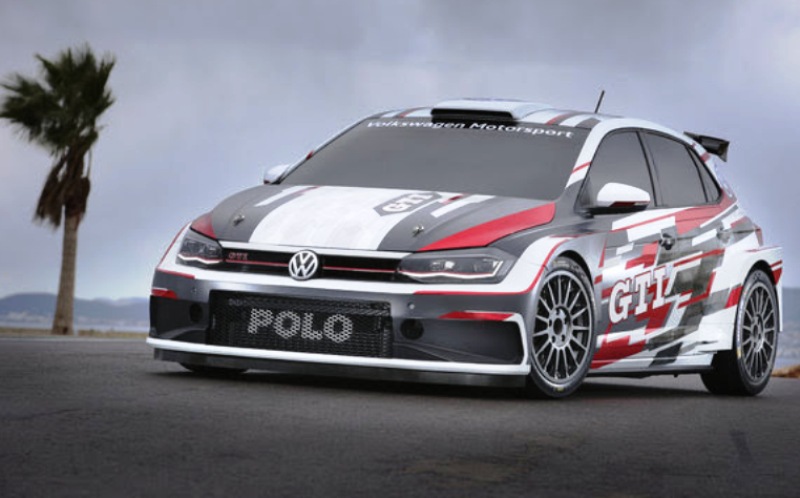
Super sporty variant of the new Polo GTI (1) for global rallying
200 kW/272 hp turbo engine, four-wheel drive and safety package
FIA homologation in late summer, race debut planned for autumn 2018
The stage is set for the rally GTI: The Volkswagen Polo GTI R5 enjoyed a successful world premiere. The four-wheel drive rally car for customer sports, which is based on the sixth and latest generation of the new Polo, was introduced to the public for the first time at the official driving presentation of the Polo GTI (2) in Mallorca on Monday evening.
The development of the new rally sports car incorporated the experience and know-how acquired whilst winning four world titles in the pinnacle of rallying, the WRC, from 2013 to 2016.
“Presenting the new Polo GTI R5 to the public was a magnificent moment,” said Volkswagen Motorsport Director Sven Smeets. “The close relationship to the road-going Polo GTI is unmistakable. In the rally Polo, the GTI family has another spectacular ambassador. Our team and the colleagues at Volkswagen Design in Wolfsburg deserve great credit for this. Over the coming months, the Polo GTI R5 must prove itself in a series of tough scenarios, in order to ensure that it can build on the success of its predecessor in the customers’ hands.”
Initial tests successful, homologation planned for late summer 2018
Development of the Polo GTI R5 has been in full swing since the start of the year. Initial tests on asphalt and gravel took place in mid-November in Fontjoncouse, France, and will continue in Great Britain in December. Responsibility for the entire project lies with Technical Director François-Xavier “FX” Demaison, as well as Project Manager Jan de Jongh, who, as race engineer, looked after world champion Sébastien Ogier’s Polo R WRC from 2013 to 2016.
“The Polo GTI R5 came through the initial tests without any problems. The feedback from the test drivers was very positive,” says Demaison. “It is obviously beneficial to be able to call upon an experienced team of engineers and mechanics, who helped to develop the Polo that won the world championship. And it goes without saying that, as we have in the past, we are also taking advantage of the close and excellent cooperation with the colleagues in the technical development department in Wolfsburg, as well as our Škoda colleagues, who have been offering their customers an R5 car since 2015.”
As in the GTI for the streets: four-cylinder turbo engine with direct fuel injection
Like the production model – the new Polo GTI – the Polo GTI R5 has a powerful straight four-cylinder turbo engine with direct fuel injection, which is mounted transversely in front of the front axle. The capacity of the rally car is limited to 1.6 litres, in accordance with regulations. This is sufficient to generate an impressive 200 kW (272 hp) and maximum torque of 400 Newton metres. A close-stepped, sequential, five-speed racing gearbox and permanent four-wheel drive achieve outstanding acceleration on any surface – whether asphalt, gravel or snow. Weighing just 1,320 kilograms, the rally GTI accelerates from 0 to 100 km/h in just 4.1 seconds.
The four-door, steel chassis, which serves as the basis for the assembly, is manufactured at the production plant in Pamplona, Spain. In accordance with FIA regulations, it is strengthened with a role cage and other safety components. The Polo GTI R5 will be homologated in the summer of 2018. The first deliveries to customer sports teams, and the first competitive outings, are planned for the second half of the year.
In 2012, the International Automobile Federation FIA passed the R5 regulations for a new generation of rally cars, aimed primarily at customer teams, talented youngsters and privateers. Since then, more than 400 cars have been produced by five different manufacturers and have been in action in national and international championships all over the world.
1) Polo GTI R5: The concept vehicle has not gone on sale, and therefore Directive 1999/94 EC does not apply.
2) Polo GTI (147 kW/200 PS) fuel consumption in l/100 km: urban 7,7 / extra-urban 4,9 / combined 5,9; CO2-emissions (combined) in g/km: 134; efficiency class: C.

































